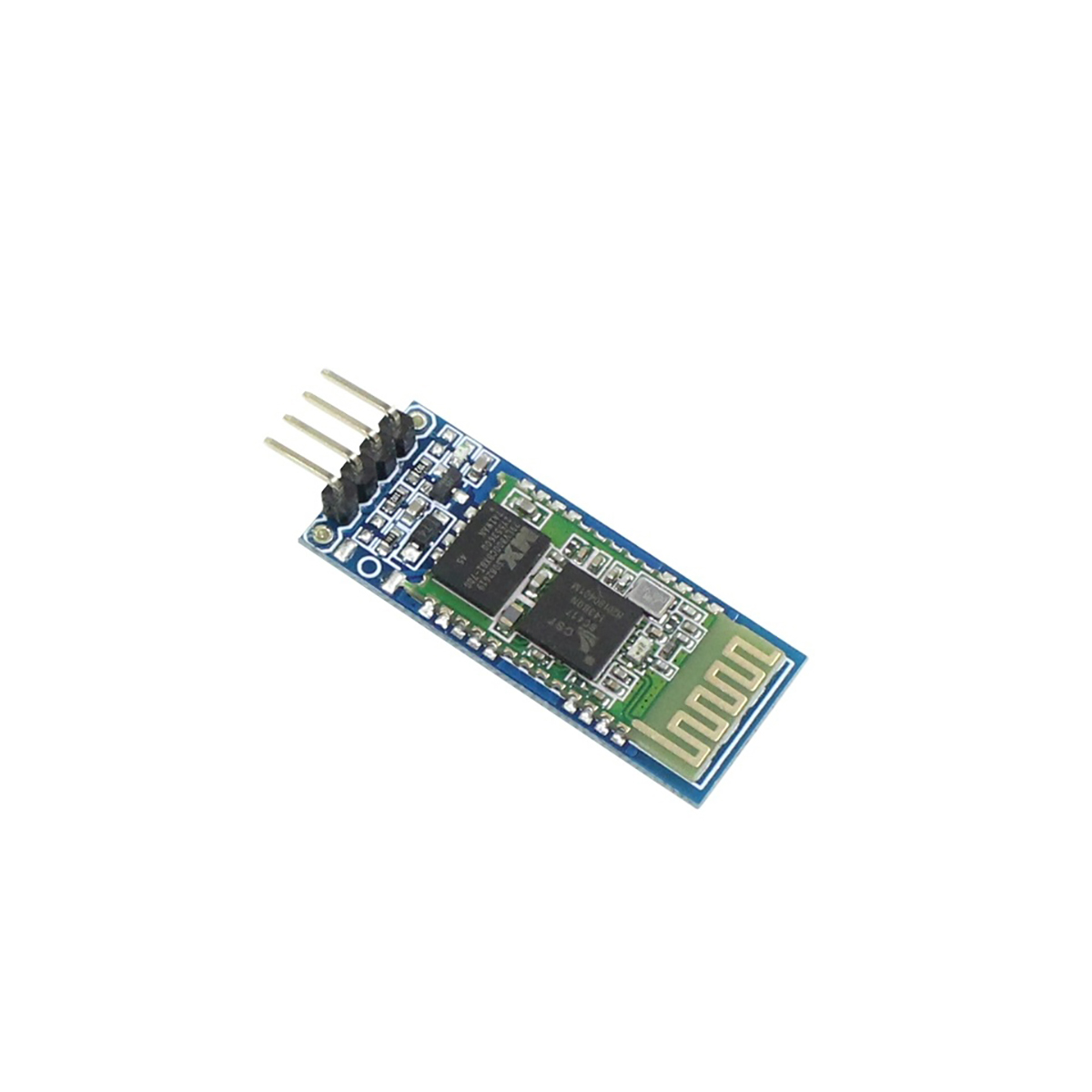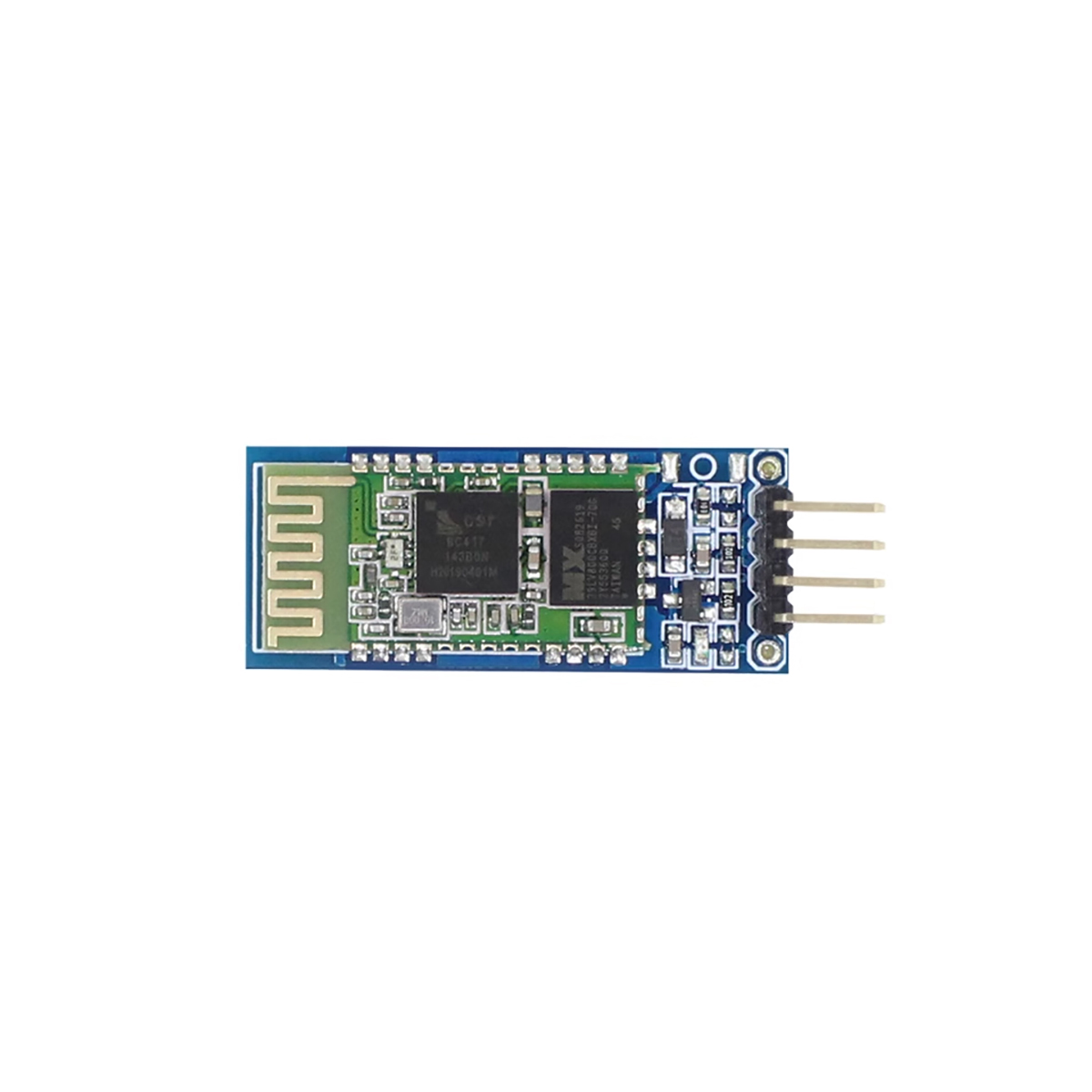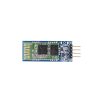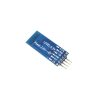HC-06 Wireless Serial 4 Pin RF Transceiver Module for Arduino








HC-06 Wireless Serial 4 Pin RF Transceiver Module for Arduino
The core module uses an HC-06 slave module with interfaces including VCC, GND, TXD, RXD, and a reserved LED status output pin. The microcontroller can determine whether the Blueth is connected via the status of this pin. The KEY pin is ineffective for slave devices.
The baseboard features a 3.3V LDO with an input voltage range of 3.6-6V. The current is approximately 30mA when unpaired and around 10mA after pairing. The input voltage must not exceed 7V!
The interface level is 3.3V, allowing direct connection to various microcontrollers (51, AVR, PIC, ARM, MSP430, etc.). 5V microcontrollers can also be directly connected without the need for a MAX232 and must not pass through a MAX232!
The effective range in open space is 10 meters. While connections beyond 10 meters are possible, no guarantee is provided for the connection quality at such distances.
After pairing, it functions as a full-duplex serial port, eliminating the need to understand any Blueth protocols. However, it only supports the communication format of 8 data bits, 1 stop bit, and no parity check, which is also a commonly used communication format. Other formats are not supported.
When no Blueth connection is established, AT commands can be used to set the baud rate, name, and pairing password. The set parameters are saved even after power loss. After a Blueth connection is established, it automatically switches to transparent transmission mode.
It is compact (3.57cm * 1.52cm) and factory SMT-produced to ensure soldering quality. It is covered with a transparent heat-shrink tube for dust prevention, aesthetics, and a certain degree of anti-static ability.
Important Notes:
TXD: Transmit pin, generally representing its own transmit end. For normal communication, it must be connected to the RXD of another device.
RXD: Receive pin, generally representing its own receive end. For normal communication, it must be connected to the TXD of another device.
During normal communication, the device’s TXD should be connected to the RXD of another device!
Loopback Test: During normal communication, the RXD is connected to the TXD of another device. Therefore, to receive the data sent by itself, as the name implies, it means connecting its own TXD directly to the RXD. This is used to test whether the device’s own transmission and reception are functioning properly. It is a quick and simple test method to determine product malfunctions when issues arise. Also known as a loopback test.
Model: HC-06
Size: 37.5×15.5mm
Weight: 3.7g
HC-06 x1
Related products
-
Arduino
Heltec Wireless Tracker ESP32-S3 SX1262 Development Board for Arduino Meshtastic IoT LoRa WAN
Rated 0 out of 5 -
Arduino
Original imported Italian Arduino Alvik AKX00066 Development Board NORA-W106 Development Kit
Rated 0 out of 5





Reviews
There are no reviews yet.